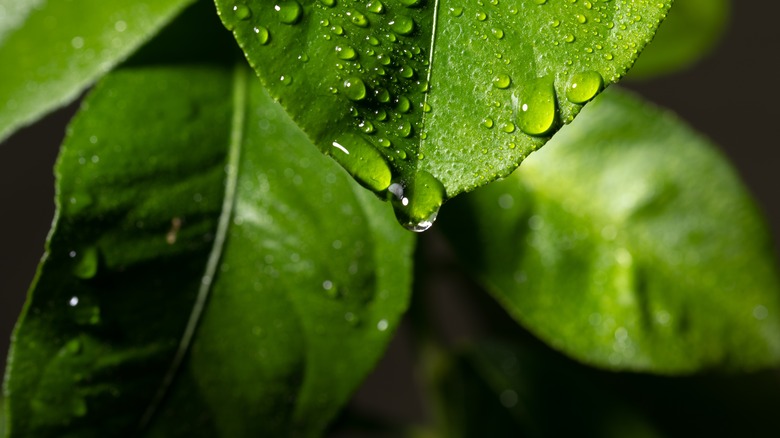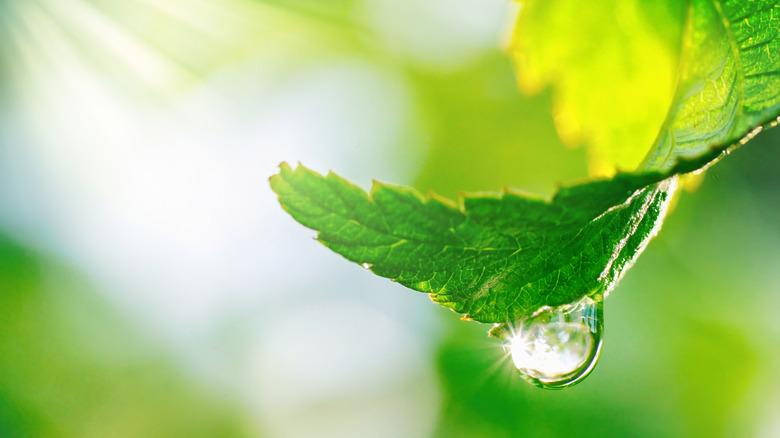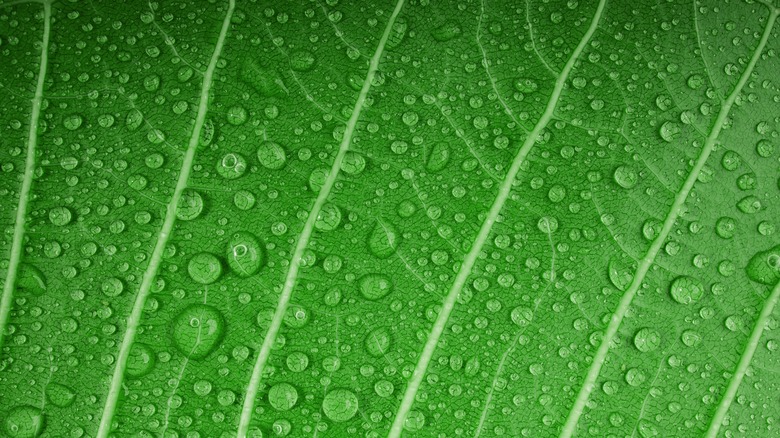What To Do If Your Indoor Plants Are Sweating
Fresh dew on your lawn can be a pleasant morning experience, but waking up to a similar view of your indoor plants may leave you feeling confused. Luckily, this is a fairly common experience — no need to panic. If you don't mist your plants, there are three main reasons why their leaves might give the appearance of sweating.
The first one is simple — it might just actually be dew. According to National Geographic, dew forms in humid environments when an object cools down. It's run-of-the-mill condensation, just like the droplets that form on the outside of a cold can. Water vapor in the air condenses into liquid once it gets cool enough, so if your home is both chilly and humid, the tiny droplets you're seeing may be just dew and not a cause for concern. The other two reasons, however, may point to an issue in your plant's condition. Keep reading to learn what each kind of "sweating" means for your plant's health and how you can fix it.
Transpiration
If you only see a few drops on the tips of the leaves of your houseplants, it's likely transpiration, a natural process that helps the cultivar rid itself of excess water. Plants need to be able to absorb carbon dioxide to function, and giving them too much to drink can make that process less efficient, explains The Nature Education Knowledge Project. To help this along, greenery will often release water into the environment through stomata, aka small pores in the leaves. If it's releasing enough at once, you'll see a few small droplets on your houseplant.
While this is a very common phenomenon, it can still signal that you're watering your cultivar too often. A lot of low-maintenance plants don't need to be given to drink frequently, so it's easy to overdo the moisture. Look up your greenery's care instructions and ensure they align with what you've been doing. Seeing droplets from transpiration occasionally doesn't point to a major issue, but if your plant is constantly wet, you may need to change your watering schedule.
Guttation
While transpiration is common and not a major cause for concern, if you're seeing a regular pattern of what looks like water droplets across your plant's leaves, it could point to a bigger issue. This phenomenon is called guttation, and it happens when a plant is either waterlogged or absorbing too many nutrients. Root pressure can push water and other nutrients up through the leaves, releasing a mixed liquid through the plant's hydathodes (via the University of Missouri). Luckily, the amount of nutrients lost isn't usually enough to cause any damage to the cultivar, but it's a major sign that you need to make some changes in how you care for it.
Overall, the appearance of water droplets on your plants' leaves may be surprising, but it's a normal process. Whether it's caused by transpiration, guttation, or simple condensation, it's not a cause for panic. Instead, just check in to ensure the moisture level is optimal, and you'll be returning to a happy houseplant.


